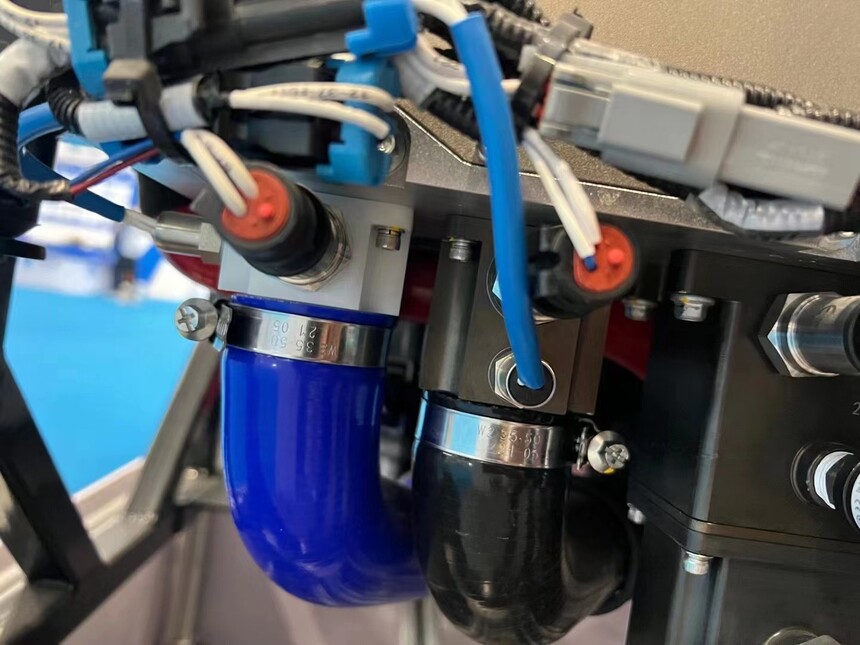NEWS
You can find latest information of SUNTRAC
Learn more about the industry
|
The Versatile Solution for Efficient Hose FasteningAbstract: Hose clamps, also known as hose clips or hose fasteners, are essential devices used to secure hoses onto fittings, preventing leakages and ensuring efficient fluid transfer across various industries. In this technical article, we will explore the key features and benefits of hose clamps, discuss different types available in the market, and highlight their diverse applications. Moreover, we will delve into the factors to consider when choosing the right hose clamp for specific requirements, promoting optimal performance and safety. 1. Introduction: Hoses are critical components in numerous systems, such as automotive, industrial, and household applications, where fluid and gas transfer is involved. A secure and reliable connection between hoses and fittings is crucial to prevent leaks, minimize downtime, and maintain operational efficiency. Hose clamps have emerged as the preferred solution for ensuring a tight seal between hoses and fittings, eliminating the risk of leakage and maintaining system integrity. 2. Understanding Hose Clamps: Hose clamps are mechanical devices designed to secure hoses around fittings or barbs by applying a controlled amount of pressure. They usually consist of a circular metal band (usually stainless steel) with a screw mechanism that can be tightened or loosened to adjust the clamping force. This versatility allows hose clamps to accommodate hoses of different sizes and materials. 3. Types of Hose Clamps: Several types of hose clamps are available, each designed to cater to specific applications. The most common types include: a. Worm Gear Clamps: These are the standard hose clamps that use a worm screw to tighten or loosen the band around the hose. They are easy to install, cost-effective, and widely used in various industries. b. T-Bolt Clamps: These clamps have a sturdy T-shaped bolt that ensures high clamping force, making them suitable for high-pressure applications like automotive and industrial uses. c. Spring Clamps: Spring clamps offer a quick and tool-free installation. They are commonly used in low-pressure applications where frequent maintenance is required. d. Ear Clamps: Also known as Oetiker or pinch clamps, ear clamps provide a uniform clamping force and are suitable for applications where aesthetics are essential, such as in the automotive and household sectors. 4. Advantages of Using Hose Clamps: •Reliability: Hose clamps provide a secure and reliable connection, reducing the risk of leaks and potential hazards. •Versatility: They can accommodate hoses of different sizes and materials, offering flexibility in various applications. •Cost-Effectiveness: Hose clamps are affordable and widely available, making them a cost-effective choice for hose fastening needs. •Ease of Installation: Most hose clamps are easy to install, requiring minimal tools and effort. 5. Applications: Hose clamps find application across a wide range of industries and sectors: •Automotive: Securing coolant hoses, air intake systems, and fuel lines. •Industrial: Transferring fluids, chemicals, and gases in manufacturing processes. •Household: Connecting hoses in garden irrigation systems and appliances. •Marine: Fastening hoses in marine engines and plumbing systems. 6. Choosing the Right Hose Clamp: Selecting the appropriate hose clamp is crucial for ensuring optimal performance and safety. Consider the following factors: •Application: Choose the type of hose clamp that aligns with the specific requirements of the application. •Material: Select stainless steel clamps for corrosion resistance, especially in harsh environments. •Size: Ensure the clamp size matches the outer diameter of the hose and the fitting. •Clamping Force: Consider the required clamping force based on the system's pressure and temperature. 7. Conclusion: Hose clamps offer a simple yet effective solution for securing hoses in a wide range of applications. Their reliability, ease of installation, and versatility make them indispensable components across various industries. By choosing the right type of hose clamp and considering the specific requirements of the application, engineers and users can ensure efficient fluid transfer, prevent leakages, and enhance overall system performance.
|







